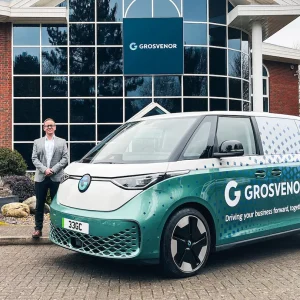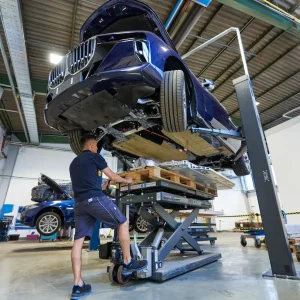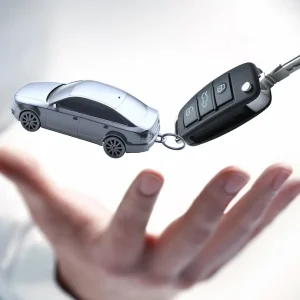With so many cars now in the lowest CO2-based tax bands, how do you differentiate between the most efficient vehicles? Tristan Young has scrutinised mpg stats to find answers needed to run a cost and eco-efficient fleet
The fact that manufacturers have been under sustained pressure from governments worldwide to build cars with ever lower CO2 figures means that in the UK we have a host of vehicles that now qualify for the lowest benefit-in-kind tax band.
It’s possible to order large family cars that qualify for the 13% minimum BIK tax band for diesel models, and there are hundreds of cars in the smaller classes achieving this banding.
Couple this to accelerating fuel prices, both for petrol and diesel, and once again it’s fuel consumption that is becoming the measure by which business car managers can ensure the lowest running costs for both their companies and drivers. And because there is a strong correlation between fuel economy and CO2 emissions, by picking the cars with the best mpg figures for your fleet choice lists now, you’ll already have the most tax-friendly models for when the Government tightens its CO2-based taxation system, as it is expected to.
So why not just pick the lowest CO2 models and not worry about mpg? The reason is two-fold.
Firstly, there isn’t always a precise correlation between between CO2 and mpg, otherwise hybrids would return the best fuel figures. While hybrids are great round town, we still know that for all-round ability a diesel is still usually the best fleet option.
The second reason is that by picking a car that’s fuel-efficient first and CO2-efficient second, you gain immediately on running costs before you gain on future tax savings.
When we set out on this article the expectation was that a handful of brands would occupy the top five slots across the board. So it’s great to see that there are 18 different manufacturers covering these charts (although admittedly only 15 different fleet departments as, for example, BMW and Mini come under one roof).
This means fleets aren’t limited in their choice, which is always a good thing for competition, particularly in the current economic climate.
Our expectation is that when we carry out this analysis in a year’s time it will be a completely different line-up thanks to the pace of technological change within car manufacturing.
While official fuel figures aren’t the be-all and end-all when it comes to cost saving or environmental credentials, they are a fair and consistent measure of one car against another. So once you’ve selected the most efficient models, it’s up to your drivers, and the way you encourage them, to achieve further improvements.
How we judged the charts
We picked the most efficient model in each vehicle range. This was to ensure our tables of results offered fleets a wide choice of cars from different makers, rather than variations of one model where only the trim level or number of doors was different. Where there were several variants with the same mpg, we picked the cheapest. Where cars have equal mpg figures we factored in CO2 as a ‘decider’.
We used data from the VCA, the Government’s official source, backed by information from BusinessCar’s online tax calculator, powered by ComCar. Any discrepancies were checked against the car maker’s own figures. All data was collated between 15-19 June.
City car
The Smart Fortwo diesel is a lesson in the basics of how to get good fuel figures – reduce weight and have a small, efficient engine. It is also the perfect example of a car that’s ahead of the curve when it comes to CO2 and the UK’s tax system.
The Smart‘s only real disadvantage is that it only has two seats. But then it’s official fuel consumption is 85.6mpg, almost 10mpg better than any other car on sale today.
Supermini
The Seat Ibiza Ecomotive just wins this category by 0.1mpg, despite having an identical CO2 to the Ford Fiesta.
Amazingly, Seat hasn’t yet gone all-out eco with the Ecomotive, as we noted when testing it at the turn of th year: “The wheels aren’t yet sitting on low rolling resistance tyres, just standard ones inflated up to a whopping 42psi.”
We managed 72.1mpg on our test route without resorting to all out eco driving. Impressive stuff.
Lower medium
Volvo‘s Driv-e cars in this class launched with an impressive 62.8mpg figure and were quickly updated to add stop-start, which raised performance to 72.4mpg. What’s even more amazing is that this figure is the same for three different ranges – the C30, S40 and V50.
A benefit of the Driv-e range is that you don’t have to pick a stripped-out low-spec car because the designation is separate from the trim level, so drivers can go eco and have luxuries.
Upper medium
More than 60mpg from a large family car is very impressive. The BMW?318d has been on sale for nearly a year now with a facelift, but has had the same mpg and CO2 figure since the current generation 3-series went on sale three years ago, which shows how far ahead of the rest of the market BMW’s Efficient Dynamics package was. Now, not to be outdone by the upcoming Audi A4e, BMW is working on a 316d with even better mpg and CO2.
Executive
The BMW 520d isn’t exactly new, yet it’s still the industry standard – even Merc’s all-new E-class hasn’t beaten it for efficiency. BMW’s strength is that its Efficient Dynamics eco-tech isn’t at the expense of driving experience or performance. While this article isn’t about performance figures, senior management choosing a car in this class will look at 0-62mph times, and the 520d’s 8.3 seconds time is considerably better than rivals’ stats.
Luxury
It may have been launched at the start of a recession, but if there are MDs out there still looking for efficiencies in the luxury category, the BMW 730d is the pick. It is full of efficiency gadgets that will set it apart from competitors, such as the air-flaps that close when the engine does not need cooling to improve aerodynamics.
Nearly 40mpg from a vehicle this big, refined and luxurious is very clever indeed.
Mini-MPV
Renault has been clever about the introduction of the new Grand Scenic to the UK. Because our tax system is based on CO2 and not other emissions (such as particulates), the British arm of the firm is favouring the 106dCi 1.5 diesel over the 110dCi, which is more powerful and cleaner in overall emissions thanks to a soot trap.
Removing the trap means better mpg and lower CO2, and a win in this class, but an ultimately less clean engine.
MPV
The size of cars in this class counts against them when it comes to efficiency, which makes the 47.1mpg fuel figure achieved by the Ford Galaxy, and the Seat Alhambra and VW Sharan sister cars even more impressive. They also come in below the 160g/km cut-off for capital allowance.
Expect big steps forward in this class as the Sharan and Alhambra are based on an ageing platform and a new model could have greater efficiency built-in.
Small off-roader
Adding Optimal Drive eco-tech to the Toyota Rav4 gives it a win without having to drop all-wheel drive, which the Volvo XC60, VW Tiguan and Ford Kuga have all done. Losing four-wheel drive gives an immediate cut in weight, so improving mpg.
The Rav4 has a front-drive option, but it’s currently only available for the petrol version. If this were coupled to the diesel, Toyota would be even further ahead of its rivals in this class.
Large off-roader
It may not go far off-road, but the Lexus RX450h is streets ahead on CO2 and a good 4mpg better in this class than any of its rivals. It shows how hybrid power can be put to good use in the right package.
We drove the car last month and wrote: “The claimed figures are such a huge step forward that for any company driver looking for a large off-roader, it’s financially ridiculous to go anywhere else.”





